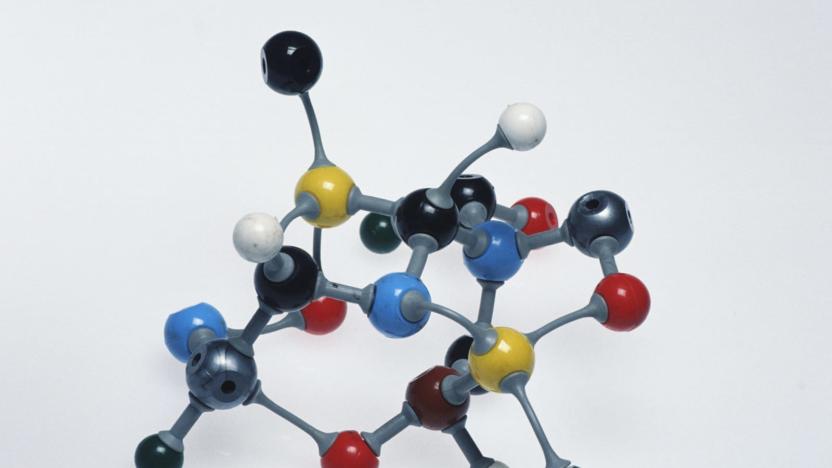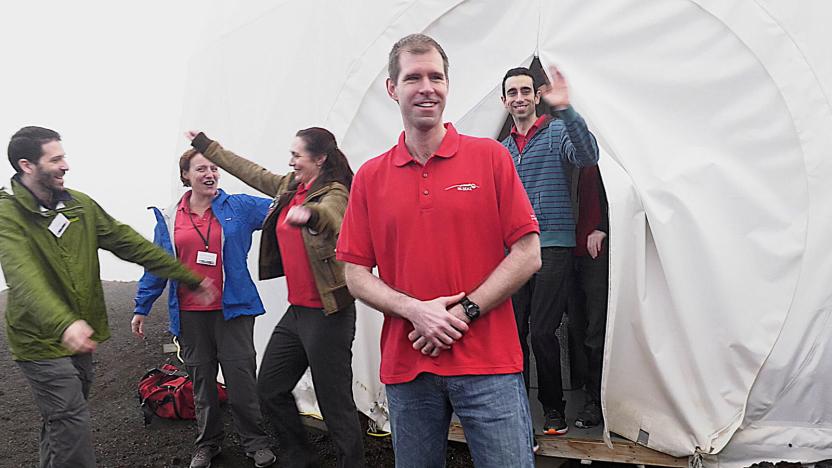simulation
Latest

‘Session’ doesn’t care about your pro-skater high scores
There hasn't really been a good skateboarding game since Skate 3 in 2010. Don't even try to mention Tony Hawk 5, either: that game was awful. Session, an upcoming skateboarding simulation game by Crea-ture Studios, aims to change that with a neat-looking dual-stick title that focuses on using physics to pull off cool, realistic tricks. If funded, Session will be available for Xbox One and Steam — sorry PS4 fans, this one isn't for you.

‘Football Manager 2018’ will have gay players
Game developer Sports Interactive has done well at grabbing headlines and getting ahead of the curve to reflect current events. Four months after Brexit, the company announced that Football Manager 2017 would include potential scenarios reflecting player visa issues resulting from the UK leaving the EU. The next edition included something different to better reflect reality: Football Manager 2018 will include gay players, a first for the franchise.

IBM's simulated molecule could lead to drug and energy advances
IBM's quantum computer has made a small advance that could ultimately lead to a major chemistry breakthrough. A team of IBM researchers has successfully used IBM Q to accurately simulate the molecular structure of beryllium hydride (BeH2), the largest molecule ever to be simulated by a quantum computer to date. This is pretty important, because simulating any molecule on a quantum level is no easy task, never mind a big one.

Lunar 'sandbox' helps robots see in harsh moon lighting
Everything is more extreme on the moon. On top of temperatures that range from -300 F to +224 F, future astronauts and probes must deal with lighting conditions generously described as "harsh." To help, researchers at Ames Research Center in Silicon Valley created a lunar testbed, complete with craters, fluffy dust and solar simulator lights. The goal is to develop sensors that can "see" in such conditions to help probes and, eventually, humans navigate the surface safely.

ICYMI: Tornado simulators and cranial cracking robo-surgeons
Today on In Case You Missed It: Researchers at the University of Wisconsin-Madison are leveraging 20,000-core supercomputers to model the inner workings of supercells in hopes of finding out why some storms unleash tornadoes while others do not. In all, the simulation relied on nearly two billion individual data points. We also take a look at a sure-handed robotic surgeon developed at the University of Bern in Switzerland that's designed to drill tiny holes in your skull. See, in order to install a cochlear implant, doctors need to cut a small hole in your skull but the location is packed with facial and taste nerves. One wrong move and the operation can do more harm than good. But with this robo-surgeon on call, doctors can drill more deftly. As always, please share any interesting tech or science videos you find by using the #ICYMI hashtag on Twitter for @mskerryd.

Microsoft drone simulator helps you prevent real-world crashes
It's relatively easy to develop a drone that can fly on its own, but it's another matter developing one that can navigate the many obstacles of real life. That's where Microsoft thinks it can help. It just published an open source simulator, the Aerial Informatics and Robotics Platform, that helps designers test and train autonomous machines in realistic conditions without wrecking expensive prototypes. The tool has vehicles move through randomized environments filled with the minutiae you see on a typical street, such as power lines and trees -- if your drone can't dodge a tree branch, you'll find out quickly. You can see what the vehicle would see (including simulated sensor data), and the software ties into both existing robotic hardware platforms and machine learning systems to speed up development.

Simulation of hidden ocean tides could lead to better sonar
There's a lot of tidal movement under the ocean's surface, but we haven't had a great understanding of it so far. Internal tides, created around continental shelf breaks, are far more difficult to predict than the ocean waves you can see. However, MIT researchers just made a breakthrough: they've accurately simulated those hidden tides for the first time. They melded a hydrodynamic model with data from a coastal sound wave study to replicate an ocean environment (in this case, a shelf break near the US' eastern coast) with a previously unseen level of complexity, complete with background elements like currents and eddies. The technique should be useful for predicting climates and fishing populations, but it could lead to a surprising amount of technological progress, too.

Simulated Mars mission ends its year-long experiment
A NASA-backed, year-long simulation of living on Mars has finally come to a close. The six people in the HI-SEAS (Hawaii Space Exploration Analog and Simulation) experiment have left their dome on Mauna Loa to rejoin the rest of society. The test shows that a team can maintain performance, resource gathering and social graces while spending long periods in the relative isolation necessary for a Mars mission, whether it's a temporary stay or a full-fledged colony. For example, the crew demonstrated that you can extract water from ground that appears to be dry -- important when astronauts would likely have to ration water carefully.

Software predicts the lifespans of machines by 'cloning' them
In some cases, machine breakdowns are more than just inconveniences -- in the military, they can spell disaster on the battlefield. Software is quickly eliminating those rude surprises, however. NASA spinoff Sentient Science has been offering DigitalClone, a software tool that predicts failures by 'cloning' parts. It uses an understanding of the physics of a given part, such as friction and wear, to determine when that gear is likely to break. The clone is uncannily accurate (Sentient Science has sensors to confirm its data), making it easy to extend the lifespan of a device by replacing parts before there's a crisis.

This VR flying rig had me pining for the fjords
Riding on a flying, virtual Pegasus is cool and all, but German design firm Hyve has cooked up what might be an even purer VR flying experience. Rather than plop down on a specially made stationary bike, designer Johannes Scholl has spent the last two years of his life crafting Icaros, a rig you climb on top of to simulate flight. There's no motor or hydraulics here — the sense of motion is derived solely from your own of balance... or in my case, the lack thereof.

Virtual wound will teach medics how to treat soldiers
Field medics have ways to practice their craft before they're helping soldiers on the battlefield, but it's hard for them to understand how wounds work until they're involved in a life-or-death rescue. UCLA scientists may have the tool these medics need, however: they've developed the first detailed injury simulation to show medics what to expect. The virtual gash could make you a bit queasy (sorry!), but it's uncannily accurate. A mix of fluid dynamics and in-depth mechanics (such as bones, skin and vessels) makes sure that blood flows much as it would from a real person.

Brain simulation breakthrough reveals clues about sleep, memory
The Blue Brain Project is a vast effort by 82 scientists worldwide to digitally recreate the human brain. While still far from that goal, the team revealed a breakthrough that has already provided insight into sleep, memory and neurological disorders. They created a simulation of a third of a cubic millimeter of a rat's brain. While that might not sound like much, it involves 30,000 neurons and 37 million synapses. In addition, the simulated level of biological accuracy is far beyond anything so far. It allowed them to reproduce known brain activities -- such as how neurons respond to touch -- and has already yielded discoveries about the brain that were impossible to get biologically.

Colorful 3D cancer models show how tumors grow
Cancer is a terrible thing, but a beautiful representation of it might just help health care experts treat the disease more effectively. An international team of researchers has developed a 3D tumor simulation that shows how cancerous cells grow and mutate unevenly over time. Each color you see in a given model represents a different mutation -- the more successful one of these aberrations is at migrating and reproducing, the more its color dominates the tumor. The simulation is also much better than previous models at representing the overall shapes of tumors, illustrating the bulges that come as the cancer rapidly outgrows any nearby healthy cells.

ICYMI: Hitchhiking robot, 'Doom' within 'Doom' and more
#fivemin-widget-blogsmith-image-245360{display:none;} .cke_show_borders #fivemin-widget-blogsmith-image-245360, #postcontentcontainer #fivemin-widget-blogsmith-image-245360{width:570px;display:block;} try{document.getElementById("fivemin-widget-blogsmith-image-245360").style.display="none";}catch(e){} Today on In Case You Missed It: A kid exhibit in New York uses Kinects for an immersive environment experience. A robot is hitchhiking across the U.S. and wants strangers to take it to places like the Grand Canyon for the photo-ops. And game coders hacked up Doom to play another version of Doom inside it.

'Project Cars' will finally come out on May 6th, we hope
Remember Project Cars, the beautiful sim racer from the team behind Need for Speed: Shift? Well, it's finally coming out, and relatively soon. Or at least that's what developer Slightly Mad Studios is promising, anyway. After three embarrassing delays, we've got a new release date for your calendar: May 6th. The game will be available first on PC (via Steam) in the US before a staggered international release on PS4 and Xbox One: it'll arrive in Europe and Australasia on May 7th, followed by the UK on May 8th and North America on May 12th. There's no word on the Wii U version though, which is a little worrying.

The black hole imagery of 'Interstellar' is helping astrophysics
You may have heard that the representation of a black hole in Interstellar was not only based on real science, but might tackle researchers' problems depicting these gravitational points. Well, that just happened -- physicist Kip Thorne and visual effects outfit Double Negative have published papers detailing the code used to portray the movie's black hole, Gargantua. Rather than trace individual light rays, they followed the paths and shapes of the millions of distorted beams traveling around the hole. The technique eliminates flickering effects that not only wreck your moviegoing experience, but prevent astrophysicists from getting a clear picture of what such a scene would look like in real life.

This simulator wants to solve a big problem with self-driving cars: you
Self-driving cars are edging ever closer to becoming smart, reliable motors people can actually buy from their local dealerships. Google's crafted its first cheery prototype and Audi's driverless RS7 will happily whip around a test track at 150MPH. But while autonomous-vehicle technology is maturing, engineers and researchers still have plenty of challenges ahead. Many of them revolve around human interaction -- when driverless cars finally enter the public domain, they're likely to come with standard controls, including pedals and a steering wheel. Despite their ability to cruise around independently, these vehicles will require a manual override just in case the driver needs to retake control. But how exactly will that human-machine changeover play out inside the vehicle?

'Madden'-simulated Super Bowl match predicted the winner... and exact score
Pundits schmundits. Give us a console and an annually rehashed sports game series and we'll do the rest. Possibly. EA's Super Bowl simulation, which ran on Madden 15 last week, pegged the New England Patriots to win, coming from behind to clinch it 28-24 against the Seattle Seahawks. Which is exactly what happened in real life last night, with the Patriots trailing in same third quarter. While this year's prediction might be particularly uncanny, Madden has now picked the winner in eight out of the last 10 Super Bowls. However, some may still prefer the shock and awe of Breaking Madden in comparison to more straight-laced sims.

The Escapists cracks open Xbox One next month
Mouldy Toof Studios' prison-breaking game The Escapists will launch on Xbox One on February 13, the developer announced today. Additionally, the game will launch in full on Steam on that day after nearly six months on Early Access. In it, players plot an extravagant prison escape while abiding by the prison's schedule, crafting weapons and tools while not raising suspicion from guards. The Escapists' full version will feature six unique prisons and six different methods to escape from them, such as digging your way out or taking over the whole facility. The game also includes ten prison jobs that players can perform in order to learn useful skills relevant to their escape strategies. The game is currently $15 on Steam Early Access. Worms series developer Team 17 signed on as The Escapists' publisher in February 2014. [Image: Mouldy Toof Studios]

LifeBox for iPhone is strange and addictive
I'm not quite sure how to describe LifeBox (free until Mid-January). It's a bit like the infamous Pet Rock of years ago or the more recent Tamagotchi. It just sits there, but unlike the Pet Rock, little stories unfold over time in tiny animated boxes. When you start, the app creates five boxes with animated stick figures inside. As you watch them, they will do entertaining things, but you can't really interact with them in any way. You can move the boxes, add or delete boxes, even add wallpaper from your photo library as backgrounds. There are 15 different kinds of boxes, and when you select them you'll get a description of what's going on inside. You can get help from the app, and it gives you the basics of adding and subtracting things on your screen. A US$1.99 in app purchase gives you colored boxes. This is the kind of app that will excite some people and leave others scratching their heads. The size of the app, 350 MB, tells you there is more here than meets the casual eye. Just stay with the animations and watch for interesting things to happen. They won't happen right away. Feature-wise the app is pretty sparse. You can mail or send your screen to social media, but the shared image is not animated so the charm is lost. I liked LifeBox because it is original, and isn't what it appears at first. I saw a few bugs. For example, when adding a new box the app reported it couldn't do it, but then it did. It didn't run well on my iPad Air 2. The app seemed stuck and didn't want to launch. It's not a universal app and I guess they mean it. LifeBox requires iOS 7 or later. It's optimized for the iPhone 5 and 6 series of hardware. While it says it will run on an iPad, I couldn't get it to run at all so be forewarned. That's life, I guess.










